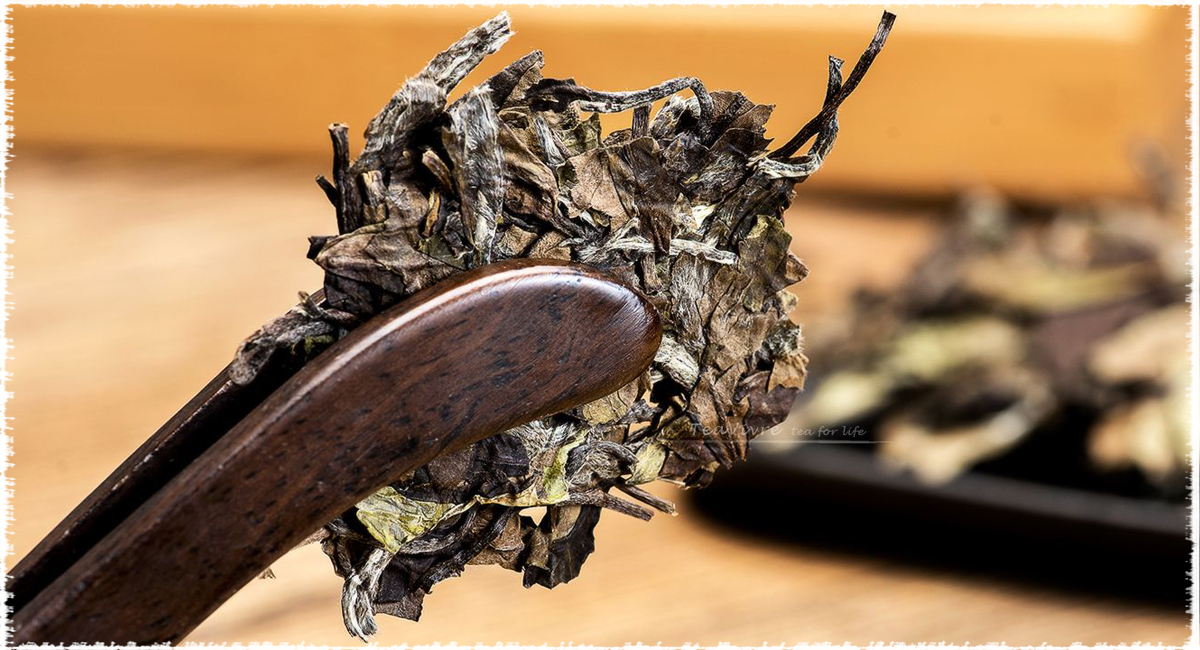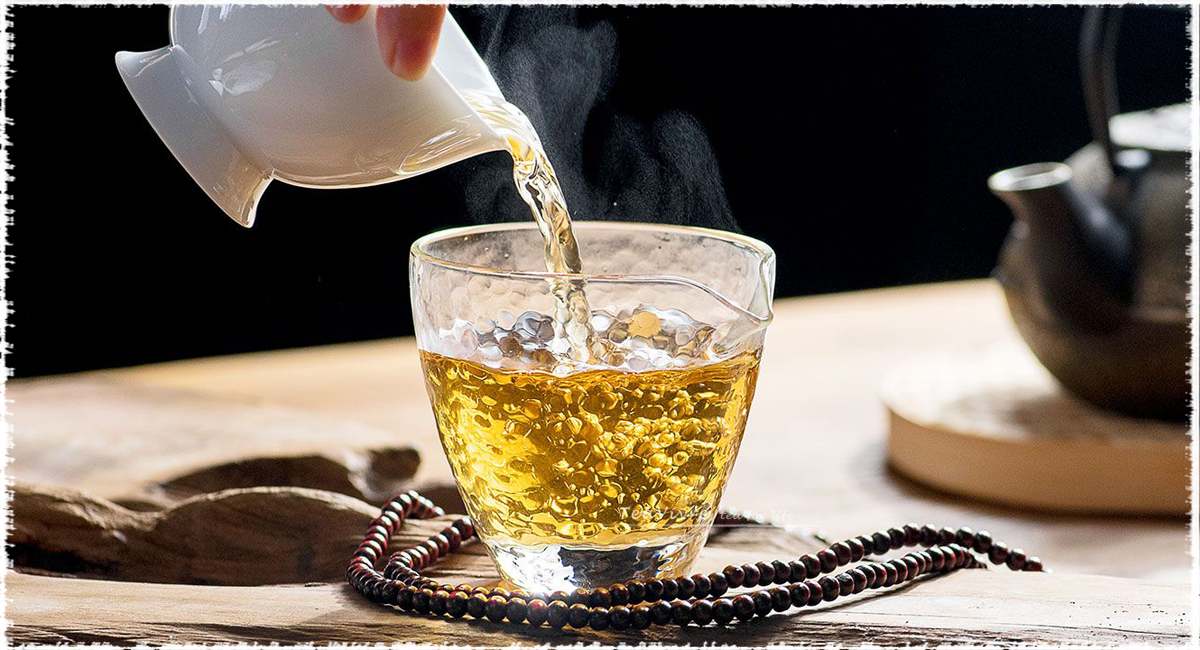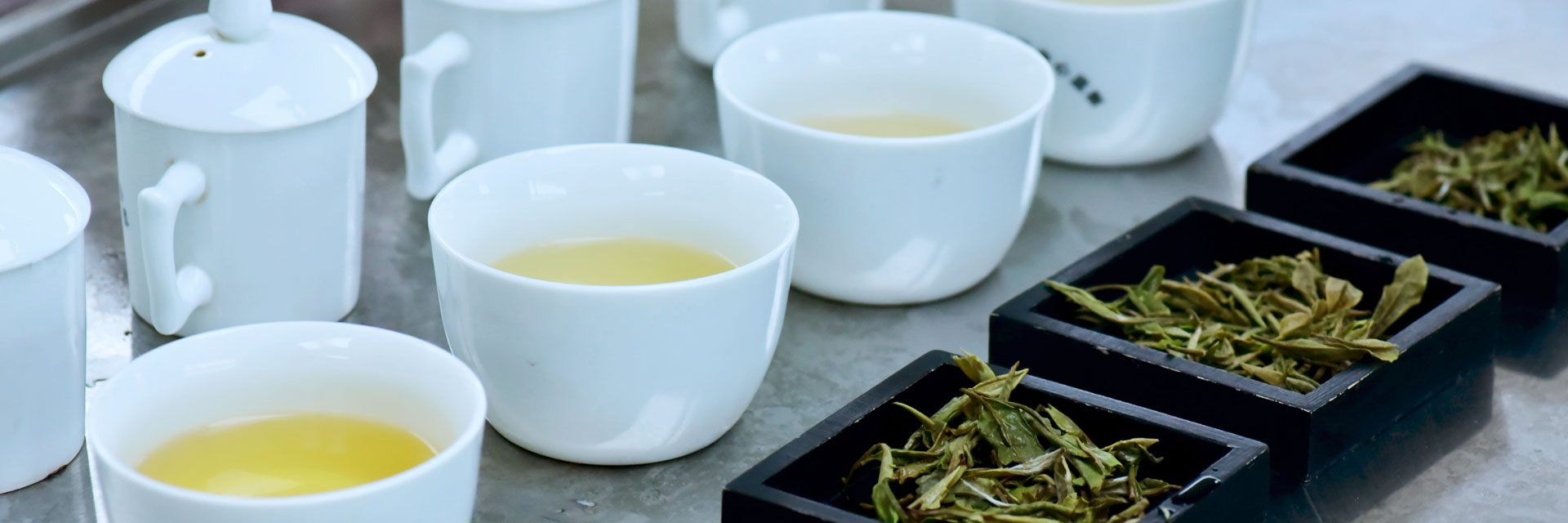Based on the picking standards of the White Tea raw materials, there are different types of White Teas such as Silver Needle White Tea (Bai Hao Yin Zhen), White Peony White Tea (Bai Mudan) and Shou Mei White Tea/Gong Mei White Tea.
Tea enthusiasts often concentrate on the tea stems when talking about Shou Mei tea. It’s not an exaggeration to say that the quality of Shou Mei tea is achieved because of these tea stems.
The tea stems in Shou Mei/Gong Mei white tea play an important role in its quality. The tea stems, also known as “茶梗” in Chinese, are the branches attached to the lower part of the tea leaves. They serve as the essential organs that bind the tea tree and its leaves.

The high carbohydrate content of the tea stems gives the tea plant energy for respiration, growth, and metabolism. Shou Mei white tea’s distinct flavor and scent are a result of the tea stems’ high carbohydrate content.
Sweeter Taste
The sugar substances in white peony tea are primarily stored in the leaves and tea buds, but the sugar content in the leaves and tea buds is not as high as that of the tea stems. Consequently, in terms of flavor, white peony tea is less sweet than Shou Mei.

The tea stems in white tea can increase the sweetness and distinct flavor of the tea infusion, as many tea connoisseurs who have experienced it know. For the same branch of a tea plant, the content of sweet substances such as sucrose and reducing sugars is higher in the older leaves compared to the young leaves, and it gradually increases as the leaves age. Taking the example of a “one bud, four leaves” tea leaf, the distribution of sugar components follows the pattern: “fourth leaf > third leaf > second leaf > first leaf.” This explains why older leaves, known as “Lao Huang Pian,” are sweeter.
Another factor contributing to the increasing sweetness as white tea stems age is the lignification of the tea plant. The degree of lignification of the woody fibers in tea trees increases with age, which results in a higher sugar content. During the brewing process of white tea, the extraction of substances occurs in a specific order. Compounds like catechins, theanine, and caffeine are among the first to be extracted. Tea enthusiasts can adjust the amount of tea leaves and the concentration of each infusion based on personal preferences. Generally, after the fifth or sixth infusion, these flavor compounds are fully extracted, and the fiber is completely soaked, allowing the abundant sugars within the fiber to be released. Enzymatic action then breaks down these sugars, resulting in a sweet taste in the tea.
In addition to sugar substances, tea stems are also rich in other substances, such as pectin. This gives Shou Mei a distinct advantage in terms of taste transformation over a number of years.
Even with both being aged for three years, Shou Mei has a more complex taste compared to white peony tea. The most noticeable difference lies in thickness, with Shou Mei having better thickness and a stronger smoothness in taste.
Higher Aroma
Tea stems contain a considerable amount of aromatic substances. So during the tea processing, the aroma transfers from the stems to the tea buds. It is essential to have an appropriate amount of tea stems to produce tea with a rich and high-quality aroma.
In the early stages of Shou Mei, there is a distinct floral aroma, and the floral scents are intense and diverse. The common floral aromas include gardenia, orchid, and osmanthus.
After going through several years of transformation, Shou Mei also exhibits a significant advantage in terms of aroma. One notable advantage is that Shou Mei easily develops a jujube-like fragrance during aging, surpassing white peony tea and silver needle bai hao yin zhen tea.
Apart from contributing to taste and aroma, the tea stems of Shou Mei play another crucial role. Those who frequently enjoy white tea may notice a notable difference in the ease of prying open tea cakes between white peony and Shou Mei, both being tea cakes. In comparison, Shou Mei is often easier to pry open. The presence of tea stems during cake pressing creates noticeable spaces and gaps in the tea cake. This not only makes the tea cake easier to pry open but also facilitates the transformation of the tea cake.
Better Transformation
The principle behind the “aging” of white tea is that the tea polyphenols within the tea leaves undergo non-enzymatic auto-oxidation when exposed to oxygen in certain temperature and humidity conditions. This process leads to the polymerization of polyphenols with other substances, forming brownish-yellow polymers that gradually deepen the color of the tea infusion until it becomes a brownish-yellow hue. When tea stems are added to tea cakes, there is greater surface area exposed to air, which creates an environment that is conducive to further development.

In conclusion, the role of tea stems in Shou Mei/Gong Mei White Tea goes beyond mere structural elements; it is integral to the tea’s quality, taste, and aroma.
 Learn Professional Tea Tasting and Inspection with Tea Master Chen
Learn Professional Tea Tasting and Inspection with Tea Master Chen Yingde Black Tea
Yingde Black Tea Matcha vs. Green Tea Powder
Matcha vs. Green Tea Powder
